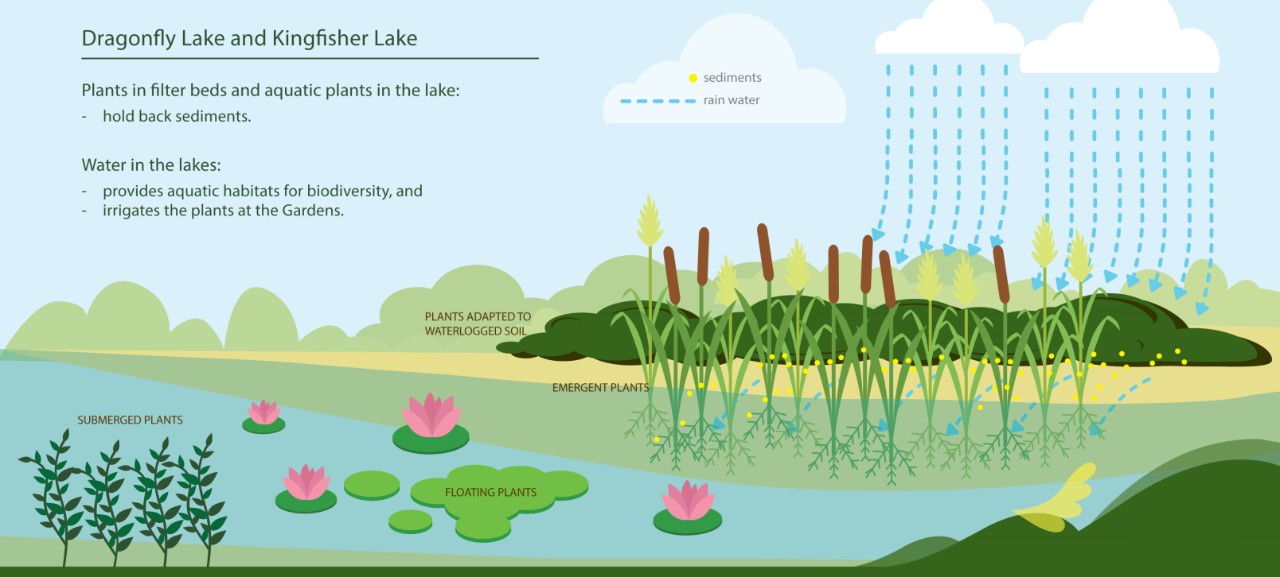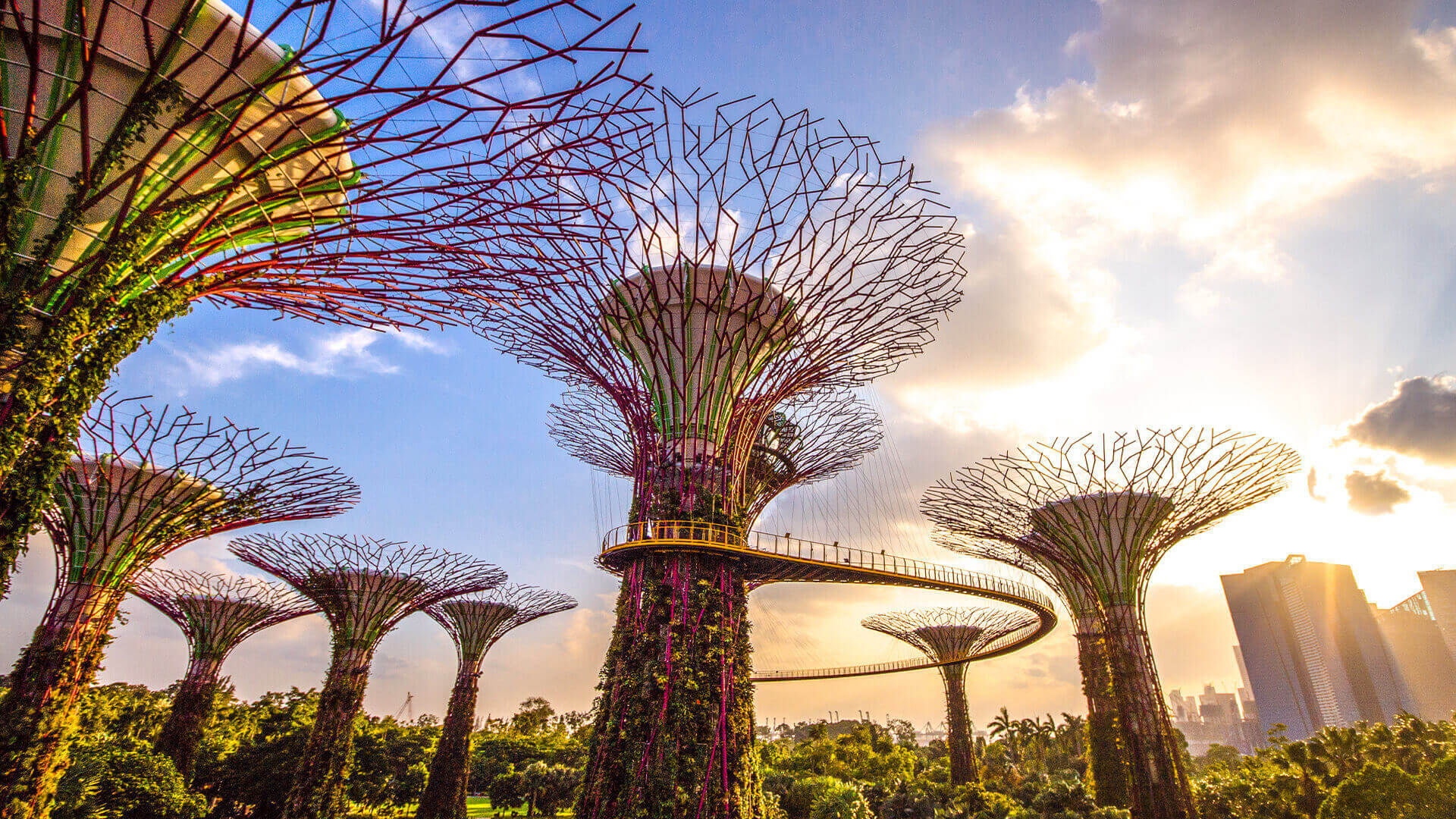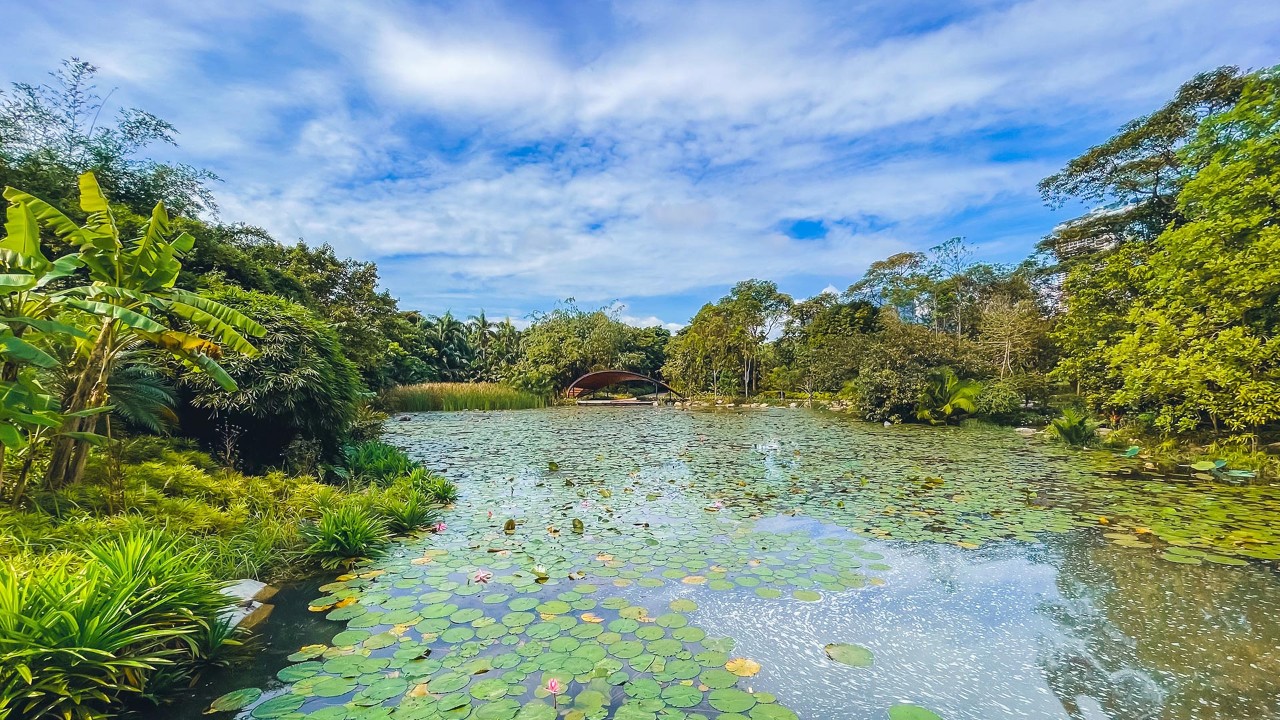The Gardens lake system incorporates key ecological processes and functions as a living system. It acts as a natural filtration system for water from the Gardens catchment and provides aquatic habitats for biodiversity such as fishes and dragonflies.
Encompassing two main lakes – Dragonfly Lake and Kingfisher Lake, the lake system is designed to be an extension of the Marina Reservoir. Water run-off from within the Gardens is captured by the lake system and cleansed by aquatic plants before being discharged into the reservoir. Naturally treated water from the lake system is also used in the irrigation system for the Gardens.
The lake system depicts the role and importance of plants in the healthy functioning of our ecosystem. It raises awareness of the value that aquatic plants play in nature, and highlights the significance of clean water in sustaining biodiversity.







